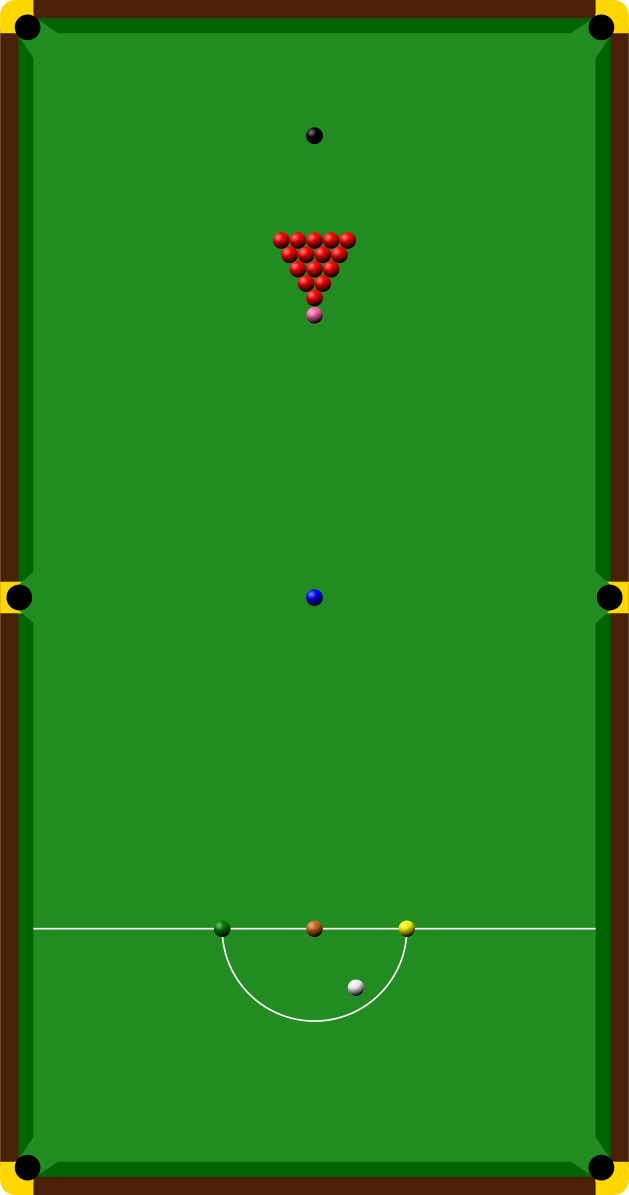By Benjamin Gorisek-Gazze, Year 12
If you frequent bars or gyms, you may have seen snooker played on the tv. It looks like a standard game of pool, but it features monochromatic balls with no numbers on them and is won by counting scores rather than beating an opponent to potting the 8-ball. While it was created in the UK, it has recently garnered global attention, like in China. It is now in the running for an Olympic sport and is likely included at your local bar’s pool table.
How to Play?
Snooker is rather simple if you are already familiar with cue sports. It takes place between two players, each using long wooden sticks, called cues, which are used to hit colored balls into holes on the table using a white cue ball. However, unlike pool, the objective of snooker is to win more frames than the opponent. Which is a fancy way of describing something similar to a set in volleyball or tennis. You win a frame by scoring more points than your opponent, or by your opponent conceding. The number of frames played depends on the location and can range anywhere from 11 to 31.
The standard setup of a snooker game is shown on the right. It consists of 15 red balls, worth 1 point each. Plus a yellow, green, brown, blue, pink, and black ball is worth two to seven points respectively. The white ball is placed anywhere in the semicircle, called the d-zone, to start.
The rules dictate that one must first pocket a red ball and is then given the choice to aim for any colored ball, which is then placed back onto the table by a referee if potted. The cycle then repeats with a red ball until you miss, at which point the turn is over. A normal turn will look something like red-blue-red-yellow-miss. After all red balls are hit in, the colored balls must be pocketed in ascending order. The frame ends once the black ball has been potted. This leads to rather incredible turns in the professional scene, a “maximum break” being the equivalent of a perfect game. This occurs when all red balls are hit in during one turn, and then all colored balls are pocketed in order.
The final rules of snooker include fouls. If the correct ball is missed, the opponent can choose to either take the shot where it lies or to have the one who missed retry the same shot in its previous position. Like pool, you cannot pocket the cue ball, nor can you hit any other balls with the cue. Additionally, you cannot hit colored balls out of turn and no balls may leave the table, meaning no air-based trick shots. These result in fouls, which award the opponent four-to-seven points based on the type of ball illegally interacted with. This being said, you can generally play with whatever rules you can persuade your opponent to be true. In a bar setting, that is.
The Globalization of Snooker
Snooker originated in the United Kingdom, where it has been played professionally for hundreds of years. However, it has recently seen rapid growth in popularity worldwide such as in Ireland and Australia. Surprisingly, this includes huge growth in China which has produced many stars including Ding Junhui who has won 14 major ranking titles to date. This has not only grown the sport in Asia but has drastically increased the number of watchers of international snooker competitions.
This popularity has translated into international attention and aspirations. The World Professional Billiards and Snooker Association (WPBSA) has been advocating for Olympic representation, their sights set on the 2024 Paris games.
The Competitive Scene
Besides the Olympics, competitive snooker has been roaring. UK tournaments and competitions have been going on for hundreds of years; examples are the UK Championship and the English Open. Recently, however, many new tournaments have been created, all under the organization of World Snooker Limited. These include events such as the China Open, International Championship, and the Masters.
The biggest event is the World Snooker Championship which has been running for almost 100 years and highlights some of the greatest to ever do it, such as Joe Davis and Ronnie O’Sullivan. It is formatted as a 32-person single-elimination tournament with five rounds. Round one is 19 frames, two and three are both 25, and the semi-final is 33. The finals are the most exciting and feature 35 frames played over multiple sessions.
Overall, the allure of the snooker competitive scene is witnessing the insane skill and knowledge these players have. Games are great to put on in the background or to watch and learn some tricks yourself.
Inside the Growing Competitive Scene: Snooker!



